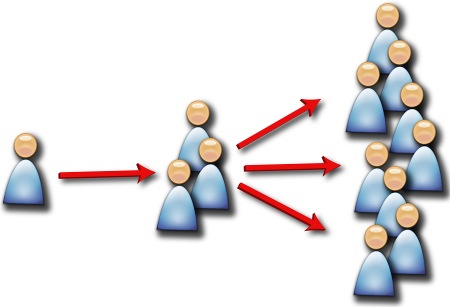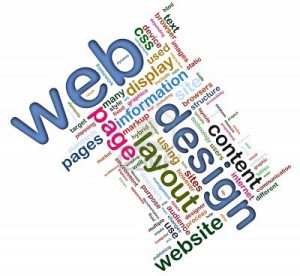
Considering integrating mobile into your marketing strategy? Well, that consideration period is short and getting shorter, according to new research teased April 18 at Forrester’s Forum for Marketing Leaders in Los Angeles.
Roughly 22% of the U.S. online population are either heading into the mobile mind shift full-tilt right now or have already made the leap. “Tablets and phones are central to how people are now experiencing the world,” said Forrester analysts Josh Bernoff, SVP of idea development. “Mobile in a Pavlovian way is creating expectations that marketers must now deliver on.”
Defined as “the expectation that any desired information or service is available, on any appropriate device, in context, at a person’s moment of need,” the mobile mind shift is about more than apps and the mobile Internet—it’s about truly discerning what consumers want and understanding the fact that if those same consumers don’t get it on their own terms, they’ll blithely move onto the competitor.
In duo of complementary reports—“The Mobile Mind Shift Index” and “Marketing Strategy for the Mobile Mind Shift”—Bernoff and senior analyst Melissa Parrish discuss the “hows” and the “what next’s?” of identifying and handing consumers that want what they want when they want it.
Bernoff developed the Mobile Mind Shift Index (MMSI) by examining three mobile engagement drivers—device ownership, frequency of access, and diversity of locations—to create six consumer categories on a scale of zero to 100, from least engaged to most connected. Essentially, devices + access + locations = MMSI.
Those with an MMSI score of 40 or less—“disconnecteds” (MMSI below 20); “dabblers” (MMSI between 20 and 30); and “roamers” (MMSI between 30 and 40)—are considered to be “unshifted segments,” which currently represents about 78% of consumers. So-called “adapters” (MMSI between 40 and 50); “immersers” (MMSI between 50 and 60); and “perpetuals” (MMSI of 60 and above) already have extremely high mobile expectations that are only going to continue to grow.
Demographics-wise, the MMSI breakdowns aren’t altogether surprising. For example, disconnecteds, for whom their “cell phones” aren’t a centerpiece of their lives—“they still think phones are for talking,” quipped Bernoff”—make up about 41% of the U.S. population and are usually 45 or older. The youngest mobile users are the most demanding segment, with the highest index percentage—nearly 40% of consumers ages 18 to 24 are in the top three categories for usage and expectations. But it’s no one single attribute that’s most important: age, affluence, and gender are all significant factors to consider in figuring out how far to take your mobile strategy.
The pertinent question now is: How can marketers, as Bernoff put it, determine if their customers are “demanding mobile and how urgent is it that you live up to that expectation?”
According to Bernoff, marketers whose customers have an MMSI of 35 or higher need to get their strategies in gear urgently, while those whose customers have an MMSI of 25 or under will see those customers beginning to demand greater mobile utility within the next year. It’s essential to determine where your customers are on the spectrum; a fanatically mobile-first strategy doesn’t make sense if your customers just aren’t there yet.
But it’s also important not to get mobile blinders on. A mobile strategy is about more than apps—it’s about customer experience, Parrishsaid. It’s also about utility. While mobile adoption is approaching 50% penetration in the U.S., of adults exposed to mobile advertising, only a quarter find it to be inventive or creative, 28% find it totally irrelevant, and nearly half ignore it altogether.
For Parrish, a self-described perpetual, the new marketing imperative is this: “You need to shorten the distance between what perpetually connected consumers want and what they get, and you do this through utility-based experience—but not just through improving your messaging and advertising.”
If you want to hook perpetuals specifically, you need to give them higher quality interactions and faster service.
“Perpetuals value experiences that save them time, hassle, and money, and these expectations are very high,” Parrish said. “So you don’t just have a new strategy to deal with, you have a mission if you choose to accept it—though you actually don’t really have a choice.”
There are five basic ways to best serve the perpetual market with high-service utility, Parrish said.
1. Become a trusted agent like Mercedes Benz, whose mbrace concierge app will do everything from sending you driving direction to making your dinner reservations.
2. Uncover and then solve a customer problem you didn’t previously no existed, like UPS and its My Choice program, which lets users reroute packages and reschedule deliveries so they no longer have to deal with missed deliveries or rain-soaked packages on their doorstep.
3. Get out of your customer’s way like Starbucks is doing through its partnership with Square, which allows customers to pay for coffee with their mobile device.
4. Automate mundane tasks like the Google Now app, which does more than remind users about upcoming appointments—it tells them exactly when to leave to get there on time and provides directions based on real-time traffic and transportation conditions.
5. Fulfill a need even your consumers didn’t know they had, like Krispy Kreme does with its Hot Light Locator app, which alerts users when they’re in proximity of fresh donuts.
What marketers need to do is add value to the mobile experience, because “it’s not just expectations that are shifting,” Parrish said. “This also means perpetually connected consumers are turning to technology for unique and awfully specific reasons.”
Both Forrester reports will be officially released on April 19.
via www.dmnews.com



